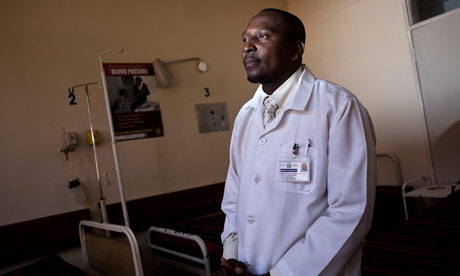Macha seems focused on other matters. "Women now know there's a pill they can buy over the counter but they don't get proper instructions. They take too much or take it too late, usually when their pregnancy starts to show at around 20 weeks, he says. "We're seeing many girls haemorrhage; sometimes they can't reach the hospital fast enough and though we try to resuscitate them, they're already gone."
This does not mean women have stopped using crude methods. "Just recently I had a girl come in with a stick protruding from her vagina, it went through the uterus and hooked into her bowels. We removed the uterus and she survived. Alongside injuries, we have to think about cost. It would be much cheaper to prevent such cases with family planning than to operate. But only 40% of Zambians who need contraception can get it."
There is also a lack of space: the hospital was originally built for a Lusaka of 1.5 million; its population has since spiralled to 4 million. "There's only one operating room," says Macha, "so if we have various girls needing vacuum aspiration at the same time, I have to play God by picking who goes first."

